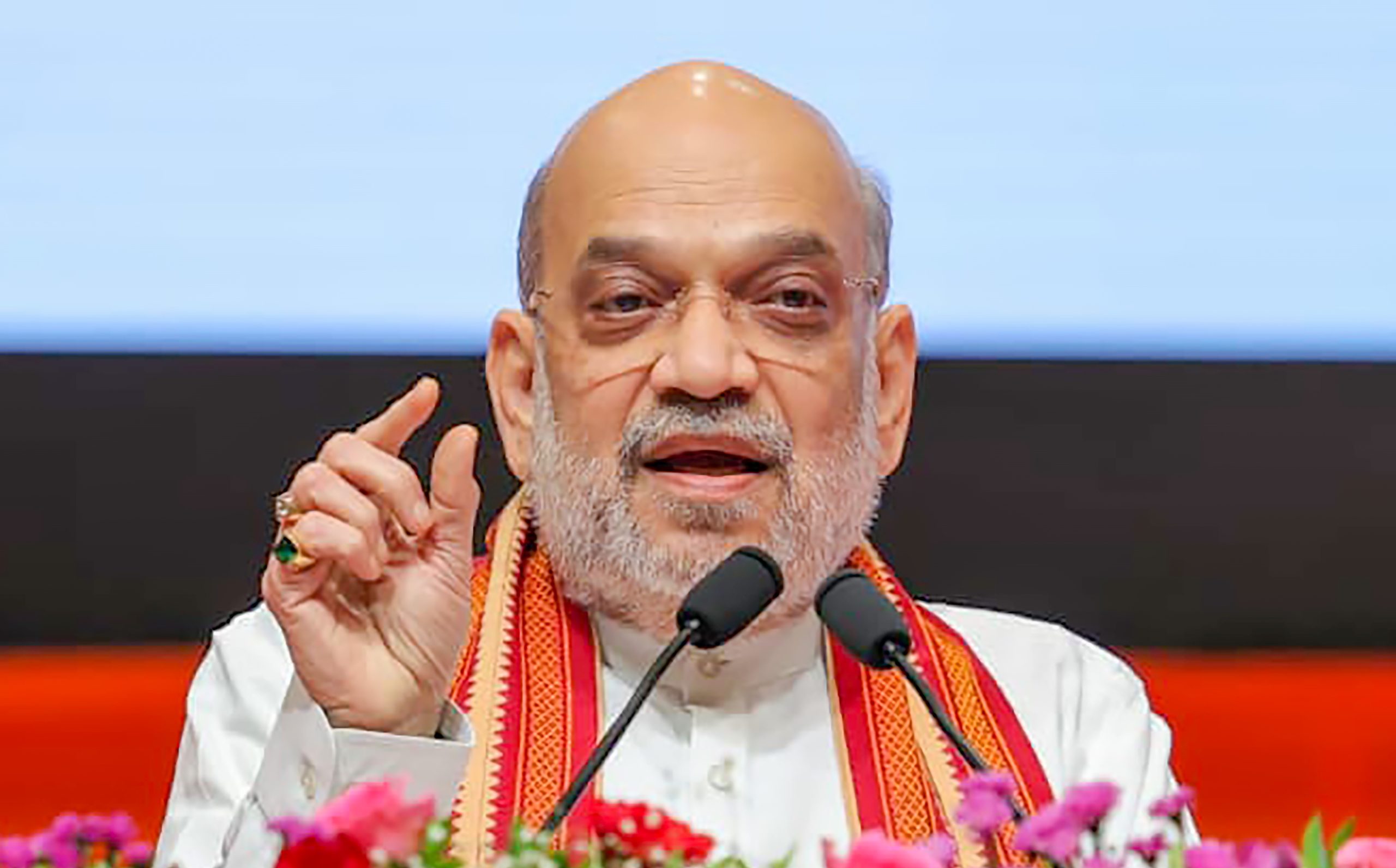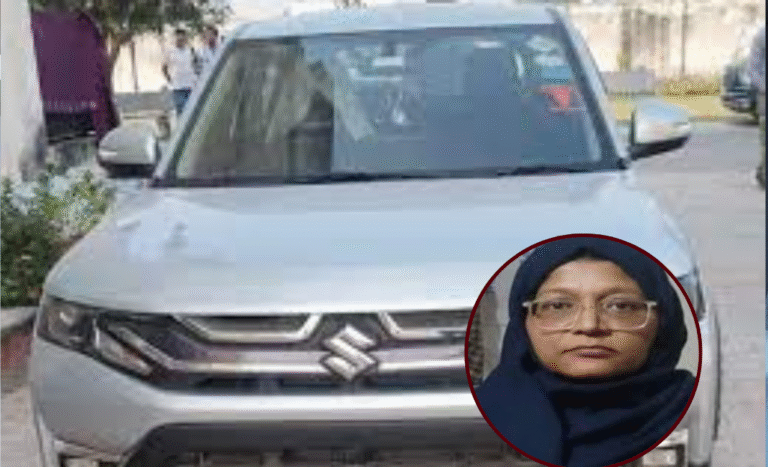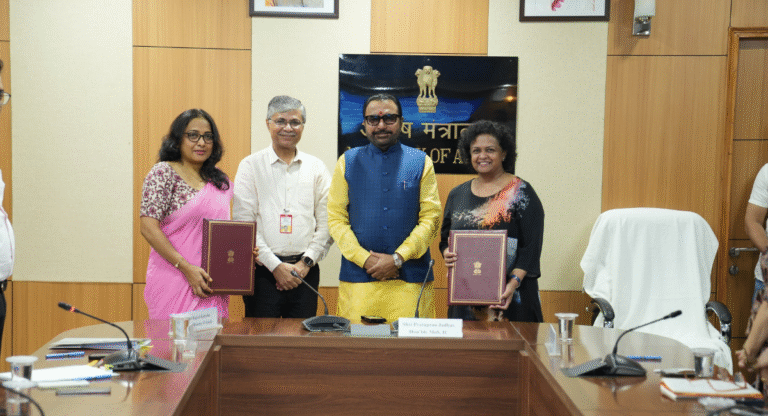
Amit Shah unveils “Bihar 3.0” focusing on industrial revival, youth empowerment
Unveiling a new vision for Bihar, Amit Shah pledges industrial growth, skill-based opportunities, and empowerment of youth while attacking RJD’s legacy of “Jungle Raj” and Congress’s failed governance.
Patna, October 22, 2025:
Union Home Minister Amit Shah on Tuesday unveiled a comprehensive development blueprint for Bihar, calling it “Bihar 3.0”, a vision aimed at transforming the state into an industrial and youth-driven powerhouse. During a high-energy public address in Patna, Shah positioned his initiative as a roadmap for the next phase of Bihar’s growth—anchored on industrial revival, skill development, employment creation, and a decisive break from what he described as “decades of misrule” under the Rashtriya Janata Dal (RJD) and Congress governments.
A Vision for Bihar’s Next Chapter
Shah’s “Bihar 3.0” is designed as a multi-dimensional development model focusing on industrial expansion, entrepreneurship, youth empowerment, and educational reforms. He said the first phase—“Bihar 1.0”—represented the state’s post-independence years of potential, while “Bihar 2.0” saw stagnation and decline due to corruption and poor governance. Now, under “Bihar 3.0,” the goal is to revive the state’s lost industrial glory and build a modern economy led by innovation and skills.
“We are not just talking about factories and roads,” Shah declared. “We are talking about building a Bihar where every young person has the opportunity to learn, earn, and lead. Bihar 3.0 will be driven by its youth—educated, skilled, and confident.”
Attack on RJD’s Track Record and Ticket Controversy
Shah used the platform to launch a scathing attack on the RJD, accusing it of perpetuating lawlessness, corruption, and nepotism. Referring to RJD’s recent decision to field Shahabuddin’s son, Osama Shahab, in the upcoming elections, Shah said, “The RJD’s choice speaks volumes about their priorities. While the youth of Bihar seek jobs and justice, the RJD continues to glorify a past that was defined by fear and crime.”
He questioned the opposition’s moral authority to speak on governance, saying that “those who presided over 15 years of Jungle Raj” had no right to criticize the Centre’s efforts to bring investment and stability to Bihar.
“The people of Bihar remember those dark days when kidnapping, extortion, and unemployment were rampant,” Shah said. “The RJD and Congress ruled for years, but all they gave Bihar was backwardness and migration. The BJP, under Prime Minister Narendra Modi, is determined to change that narrative forever.”
Industrial Revival and Infrastructure Push
Under the “Bihar 3.0” plan, Shah announced a series of industrial corridors, new manufacturing hubs, and the establishment of skill universities to align education with employability. He highlighted the Centre’s ongoing initiatives—such as new highways, rail projects, and the BharatNet digital infrastructure—as foundational pillars for Bihar’s industrial growth.
“The new Bihar will be built on roads, rail, and digital connectivity,” Shah said. “The Modi government has already laid the groundwork. Now it’s time for Bihar to lead the eastern industrial revolution.”
He emphasized the state’s strategic location and young demographic profile, calling Bihar a “sleeping giant ready to awaken.” Shah also hinted at special incentives for MSMEs, agro-industries, and textile sectors, which he said could generate lakhs of jobs within the next five years.
Youth Empowerment and Skill-Based Growth
A central pillar of Shah’s address was youth empowerment. He pledged to expand skill development programs, promote start-ups, and encourage entrepreneurship through government-backed funding models.
“Bihar’s youth are not looking for charity; they are looking for chances,” Shah said. “We will give them platforms to innovate, create, and contribute to the nation’s growth. Under Bihar 3.0, we will establish skill clusters in every district, connecting education with employment.”
He announced plans to open vocational institutes and incubation centres in partnership with private players and educational institutions, ensuring that Bihar’s young generation is “future-ready.”
Criticism of Congress and Opposition Alliance
Amit Shah also targeted the Congress and the broader INDIA opposition alliance, accusing them of “opportunistic politics” and “zero vision for Bihar’s future.” He said the alliance had “no roadmap, no unity, and no leadership,” claiming that only the BJP had a clear plan backed by governance experience and national leadership.
“The Congress talks about democracy but partners with parties that thrived on fear and caste divisions,” Shah said. “The people of Bihar are wise—they will not be misled again.”
Bihar’s Role in the National Growth Story
Shah asserted that Bihar’s growth was essential to India’s journey toward becoming a $5 trillion economy. He said the Centre’s development agenda would integrate Bihar into national manufacturing networks and logistics chains.
“From the Ganga to the Kosi, from Patna to Purnea, Bihar has the potential to become a hub for industries, technology, and agriculture,” he said. “Bihar’s progress is India’s progress.”
He cited examples of new industrial projects in Patna, Gaya, and Bhagalpur, noting that these would not only create jobs but also attract global investors.
The Political Undertone
Though the event was presented as a development rally, the political undertones were unmistakable. With elections approaching, Shah’s speech sought to reignite BJP’s connect with Bihar’s youth and business community while cornering the RJD-Congress alliance. His message resonated with the audience, who cheered as he vowed to make Bihar “crime-free, industry-rich, and future-ready.”
“Bihar 3.0 is not a dream—it’s a commitment,” Shah concluded. “Together, we will ensure that the next generation of Biharis will not have to leave their homeland for work. They will build their future right here.”
As the crowd erupted in applause, it was clear that Amit Shah’s Bihar 3.0 pitch was more than a development slogan—it was a political declaration, one aimed at redefining Bihar’s destiny and reclaiming its pride.














